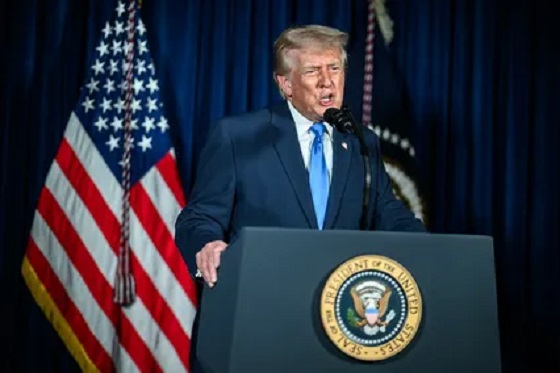Health
As cancer rates soar in younger people, experts seek answers

From LifeSiteNews
By John-Michael Dumais, The Defender
Two recent reports by the American Cancer Society reveal alarming increases in numerous cancers among millennials and Gen Z in the U.S. While mainstream medical experts debate causes, some doctors told The Defender mRNA vaccines may be to blame for the recent emergence of aggressive cancers that often don’t respond to conventional treatments.
Cancer rates among younger generations are rising at an alarming pace, with medical professionals reporting unprecedented increases in aggressive cancers over the past few years.
A study published in the August edition of The Lancet Public Health revealed that through 2019, the incidence rates for 17 of 34 cancer types were increasing in progressively younger people in the U.S., ABC News reported on July 31.
Lead author Ahmedin Jemal, DVM, Ph.D., from the American Cancer Society (ACS) told The Washington Post that if current trends in cancer and mortality rates among Gen X and millennials continue, it “may halt or even reverse the progress that we have made in reducing cancer mortality over the past several decades.”
More recent data from the ACS’ “Cancer statistics, 2024” report — with data on cancer incidence through 2020 and mortality through 2021 — showed the trend continuing.
As of 2021, among adults under 50, colorectal cancer has become the leading cause of cancer death in men and the second-leading cause in women, despite ranking fourth for both sexes in the late 1990s.
Some researchers point to lifestyle, poverty and environmental factors as potential causes for the uptick in cancers, while others suggest the COVID-19 mRNA vaccines may be to blame for the rise in “turbo cancers.”
Meanwhile, Pfizer in December 2023 spent $43 billion for Seagan, a “cancer care” biotech company with only $2.2 billion in sales. Seagan’s already-approved drugs include those for bladder cancer, cervical cancer, breast cancer and Hodgkin lymphoma.
The acquisition expands Pfizer’s oncology portfolio to 25 approved drugs, which, by the second quarter of this year, helped the company recover from last year’s drop in COVID-19 vaccine sales when its stock lost half its value.
The cancer trend has also caught the attention of health organizations worldwide, including the World Health Organization, which in February predicted a 77% rise in new cancer cases — from 20 million cases in 2022 to over 35 million cases by 2050.
Which cancers are on the rise?
The Lancet study revealed disturbing trends in cancer rates for people born between 1920 and 1990, finding that through 2019, incidence rates for 17 of 34 cancer types analyzed were increasing in progressively younger birth cohorts.
For some cancers, the incidence rate was approximately 1 to 3 times higher in the 1990 birth cohort (people in their late 20s at the time of the study) compared to the 1955 birth cohort (people in their mid-60s at the time of the study).
Particularly concerning were the increases in cancers of the small intestine (256% higher), kidney and renal pelvis (192% higher), and pancreas in both males and females (161% higher). For women, liver and intrahepatic bile duct cancer rates also saw a significant uptick (105% higher).
In younger cohorts, cancer incidence also increased for estrogen receptor-positive breast cancer, uterine corpus (endometrial) cancer, colorectal cancer, non-cardia gastric (stomach) cancer, gallbladder and other biliary cancer, ovarian cancer, and testicular cancer, anal cancer and Kaposi sarcoma in males.
For those around 30 years old, cancer rates increased an average of 12% across all cancer types.
The study also noted that mortality rates mirrored incidence trends for several cancers, including liver cancer in females, uterine corpus, gallbladder and other biliary, testicular and colorectal cancers. This suggests that the increase in incidence is substantial enough to outweigh improvements in cancer survival rates.
The findings from the ACS’ cancer statistics report, which contains data through 2021, provide additional context to the rising cancer rates in younger generations, particularly for colorectal cancer in both sexes and breast, cervical, uterine and liver cancers in women.
The Ethical Skeptic, a well-regarded statistician on the social platform X, posted more recent cancer mortality data. The following graph, based on the Centers for Disease Control and Prevention’s WONDER online databases, shows excess mortality from malignant neoplasms (spreading tumors) “elevated 29% and still rising” for ages 0-54 through week 22 of 2024:

More recent ‘turbo cancers’
Dr. William Makis, a Canadian board-certified nuclear medicine radiologist and oncologist, reported in an interview on the “America Out Loud PULSE” podcast on July 6 that he has seen “just an explosion of extremely aggressive cancers in very young individuals” since the COVID-19 pandemic began.
Cancers Makis identified that are particularly affecting younger populations include breast cancer, colon cancer, bile duct cancer, pancreatic cancer, leukemia and lymphoma.
Makis emphasized that these cancers are presenting at advanced stages (3 or 4), are behaving “very aggressively” and are often resistant to conventional treatments. He referred to these as “turbo cancers” due to their rapid growth and spread.
Emmy Award winning FOX 4 Morning Reporter Matt Stewart announces he has Cancer – His Wife has also developed Cancer – 💔
“Friends, I have some devastating news to share with all of you. I have been feeling a little off mentally lately – dizzy, nauseous, a little double vision.… pic.twitter.com/NaiVzj8qN1
— “Sudden And Unexpected” (@toobaffled) July 28, 2024
Dr. Angus Dalgleish, a renowned oncologist and professor at St. George’s, University of London, has reported rapidly progressing cancers in patients receiving COVID-19 mRNA booster shots, although he did not specify the ages affected.
In particular, melanoma patients who had been in remission in his practice experienced sudden relapses. Cancer doctors around the world told him him about rapidly accelerating cancers, including lymphomas, leukemia, kidney and colorectal cancer and “multiple metastatic spread” of cancers throughout the body.
A Japanese study published in April in the journal Cureus reported post-COVID-19-vaccination increases in mortality for most age groups, including those under 50 years old. Cancers with the highest excess mortality rates included ovarian cancer, leukemia, prostate cancer, lip/oral/pharyngeal cancer and pancreatic cancer.

We do not have the data to point to
Mainstream medical experts have proposed several theories to explain the rising cancer rates among younger generations.
In the Lancet paper, the authors attribute the increase in cancers in younger people to higher exposure to carcinogens early in life, obesity, unhealthy diet, environmental chemicals, changes in reproductive patterns and alcohol-related behaviors.
In its “Cancer statistics, 2024” report, the ACS pointed to several additional potential culprits, including poverty-related factors such as inadequate health insurance and lack of access to screening and high-quality healthcare, and to structural racism-related factors, including mortgage lending bias and neighborhood-level redlining.
Dr. William Dahut, a medical oncologist and ACS chief scientific officer, told ABC News that finding a single cause is difficult. “It’s so easy for us to say ‘yes, it’s obesity’; ‘yes, it’s lack of exercise’; ‘yes, it’s processed food.’ But we do not have the data to point to.”
Dr. Kevin Nead, a radiation oncologist and assistant professor in the Department of Epidemiology at the MD Anderson Cancer Center, told ABC News that something different could be happening with the biology of cancer in younger patients, indicating a need for new approaches to screening and early detection.
Left entirely unaddressed by the current mainstream medical and media reporting is the potential contribution to the rising rates of brain, thyroid and salivary gland cancers of EMR (electromagnetic radiation) exposure from cellphones, Bluetooth headsets, Wi-Fi routers and 4G/5G transmission towers.
Rapid cancer onset ‘basically impossible along the known paradigm’
Dr. Harvey Risch, professor emeritus of epidemiology at the Yale School of Public Health, told The Defender, “Clinicians have been seeing very strange things, for example, 25-year-olds with colon cancer who don’t have family histories of the disease.”
He stressed that this cancer typically takes decades to develop and that its appearance in younger people is “basically impossible along the known paradigm for how colon cancer works.”
On the podcast with Makis, Dr. Peter McCullough, a prominent cardiologist and researcher, also noted the typically longer lead time for cancers to develop.
“Is what we’re seeing now — are these just individuals who have cancers at the time they take the COVID vaccines or are these brand new cancers caused by the vaccines?” he asked.
Possible mechanisms for mRNA vaccine-caused cancers
Makis hypothesized that the mRNA vaccines could be accelerating already existing cancers and are likely responsible for the recent rise in aggressive cancers.
“These lipid nanoparticles [LNPs] — one of the key features is that they don’t stay in the arm. They end up in the systemic circulation,” Makis said.
He suggested that about 75% of the injection ends up in the bloodstream within a few hours, potentially depositing “pseudouridine, modified mRNA and DNA” throughout the body. He listed the brain, bone marrow, liver, pancreas, gall bladder, spleen, testes, ovaries, liver, colon and breast milk as among the locations where these components have been found.
“We are seeing cancers where there is deposition of these vaccine particles,” he said, noting that bone marrow deposition could be causing the increased incidence of leukemia.
Risch, while cautioning that long-term data is still lacking, pointed out potential mechanisms by which vaccines might affect cancer risk.
“The spike protein is toxic,” he stated. “The LNP itself is toxic. The biological manufacturing process involving inadequate filtration of possible harmful components can be toxic.”
Both Makis and Risch discussed the “IgG4 [immunoglobin type 4] antibody shift” caused by the mRNA vaccines as a likely contributor to rapid-onset cancers.
Risch explained how this particular antibody differs from IgG1 and IgG2 responses, which work to neutralize foreign pathogens. By contrast, IgG4 creates a “tolerance response” to keep the immune system from overreacting to things like pollen and food allergens.
Makis explained how after multiple mRNA injections, the level of IgG4 antibodies markedly increases, reducing immune surveillance, thus making “cancer invisible to your immune system.”
“If you’ve got tolerance to cancer cells, it’s not going to stop the cancer cells from reproducing,” Risch said. “You don’t want that to happen.”
Risch said that no one yet knows the depth of damage to the immune surveillance mechanisms the mRNA vaccines are causing, “but there are plausible mechanisms to be looking at.”
Full vid: https://t.co/76kyipSw0T
— Sense Receptor (@SenseReceptor) August 11, 2024
Health
FDA warns ‘breast binder’ manufacturers to stop marketing to gender-confused girls

From LifeSiteNews
Dr. Marty Makary took aim at the transgender-medical-industrial complex that has exploded in recent years during a recent press conference.
Food and Drug Administration (FDA) commissioner Dr. Marty Makary has sternly warned companies manufacturing “breast binders” to cease marketing and supplying their product to gender-confused girls seeking to make their bodies appear masculine.
“Today the FDA is taking action,” said Makary in a press conference. “We are sending warning letters to 12 manufacturers and retailers for illegal marketing of breast binders for children, for the purposes of treating gender dysphoria.”
“Breast binders are a class one medical device with legitimate medical users, such as being used by women after breast cancer surgery,” but “these binders are not benign,” he cautioned. “Long-term usage has been associated with pain, compromised lung function, and even difficulty breast feeding later in life.”
“The warning letters will formally notify the companies of their significant regulatory violations and require prompt corrective action,” said the FDA head.
.@DrMakaryFDA: “Today the FDA is taking action. We are sending warning letters to 12 manufacturers and retailers for illegal marketing of breast binders for children, for the purposes of treating gender dysphoria.” pic.twitter.com/6JNAy36223
— HHS Rapid Response (@HHSResponse) December 18, 2025
The warning letter addressed to California manufacturer, GenderBender, notes that the company’s website states that “[c]hest binding is the practice of compressing breast mass into a more masculine shape, often done in the LGBTQ community for gender euphoria.”
“Your firm should take prompt action to address any violations identified in this letter. Failure to adequately address this matter may result in regulatory action being initiated by the FDA without further notice. These actions include, but are not limited to, seizure and injunction,” advised the FDA.
During his presentation, Makary took aim at the transgender-medical-industrial complex that has exploded in recent years.
“One of the most barbaric features of a society is the genital mutilation of its children,” observed Makary.
“Pushing transgender ideology in children is predatory, it’s wrong, and it needs to stop,” he declared.
“This ideology is a belief system that some teachers, some pediatricians, and others are selling to children without their parents knowing sometimes, or with a deliberate attempt to remove parents from the decision making,” Makary explained.
To witness society “putting kids on a path of chest binders, drugs, castration, mastectomies, and other procedures is a path that now many kids regret,” he lamented, as he pointed to Chloe Cole, who has reverted to her God-given femininity after undergoing so-called “gender-affirming” surgery as a teen.
Cole is a leading voice for young people who have “detransitioned” after having medically, surgically, and socially attempted to “transition” to a member of the opposite sex.
.@DrMakaryFDA: “Pushing transgender ideology in children is predatory, it's wrong, and it needs to stop.” pic.twitter.com/TXxWNEtNZk
— HHS Rapid Response (@HHSResponse) December 18, 2025
Health
All 12 Vaccinated vs. Unvaccinated Studies Found the Same Thing: Unvaccinated Children Are Far Healthier

I joined Del Bigtree in studio on The HighWire to discuss what the data now make unavoidable: the CDC’s 81-dose hyper-vaccination schedule is driving the modern epidemics of chronic disease and autism.
This was not a philosophical debate or a clash of opinions. We walked through irrefutable, peer-reviewed evidence showing that whenever vaccinated and unvaccinated children are compared directly, the unvaccinated group is far healthier—every single time.
Reanalyzing the Largest Vaccinated vs. Unvaccinated Birth-Cohort Study Ever Conducted
At the center of our discussion was our peer-reviewed reanalysis of the Henry Ford Health System vaccinated vs. unvaccinated birth-cohort study (Lamerato et al.)—the largest and most rigorous comparison of its kind ever conducted.
|
The original authors relied heavily on Cox proportional hazards models, a time-adjusted approach that can soften absolute disease burden. Even so, nearly all chronic disease outcomes were higher in vaccinated children.
Our reanalysis used direct proportional comparisons, stripping away the smoothing and revealing the full magnitude of the signal.
- All 22 chronic disease categories favored the unvaccinated cohort when proportional disease burden was examined
- Cancer incidence was 54% higher in vaccinated children (0.0102 vs. 0.0066)
- When autism-associated conditions were grouped appropriately—including autism, ADHD, developmental delay, learning disability, speech disorder, neurologic impairment, seizures, and related diagnoses—the vaccinated cohort showed a 549% higher odds of autism-spectrum–associated clinical outcomes
The findings are internally consistent, biologically coherent, and concordant with every prior vaccinated vs. unvaccinated study, all of which show drastically poorer health outcomes among vaccinated children
The 12 Vaccinated vs. Unvaccinated Studies Regulators Ignore
In the McCullough Foundation Autism Report, we compiled all 12 vaccinated vs. unvaccinated pediatric studies currently available. These studies span different populations, countries, study designs, and data sources.
Every single one reports the same overall pattern. Across all 12 studies, unvaccinated children consistently exhibit substantially lower rates of chronic disease, including:
- Autism and other neurodevelopmental disorders
- ADHD, tics, learning and speech disorders
- Asthma, allergies, eczema, and autoimmune conditions
- Chronic ear infections, skin disorders, and gastrointestinal illness
This level of consistency across independent datasets is precisely what epidemiology looks for when assessing causality. It also explains why no federal agency has ever conducted—or endorsed—a fully vaccinated vs. fully unvaccinated safety study.
Flu Shot Failure
We also addressed the persistent failure of seasonal influenza vaccination.
A large Cleveland Clinic cohort study of 53,402 employees followed participants during the 2024–2025 respiratory viral season and found:
- 82.1% of employees were vaccinated against influenza
- Vaccinated individuals had a 27% higher adjusted risk of influenza compared with the unvaccinated state (HR 1.27; 95% CI 1.07–1.51; p = 0.007)
- This corresponded to a negative vaccine effectiveness of −26.9% (95% CI −55.0 to −6.6%), meaning vaccination was associated with increased—not reduced—risk of influenza
When vaccination exposure increases, chronic disease, neurodevelopmental disorders, and inflammatory illness increase with it. When children are unvaccinated, they are measurably healthier across virtually every outcome that matters.
The science needed to confront the chronic disease and autism epidemics already exists. What remains is the willingness to acknowledge it.
Epidemiologist and Foundation Administrator, McCullough Foundation
Support our mission: mcculloughfnd.org
Please consider following both the McCullough Foundation and my personal account on X (formerly Twitter) for further content.
FOCAL POINTS (Courageous Discourse) is a reader-supported publication.
To receive new posts and support my work, consider becoming a free or paid subscriber.
-

 Health1 day ago
Health1 day agoFDA warns ‘breast binder’ manufacturers to stop marketing to gender-confused girls
-

 Daily Caller1 day ago
Daily Caller1 day agoTrump Reportedly Escalates Pressure On Venezuela With Another Oil Tanker Seizure
-

 espionage2 days ago
espionage2 days agoCarney Floor Crossing Raises Counterintelligence Questions aimed at China, Former Senior Mountie Argues
-

 Business18 hours ago
Business18 hours agoThere’s No Bias at CBC News, You Say? Well, OK…
-

 Business1 day ago
Business1 day agoTaxing food is like slapping a surcharge on hunger. It needs to end
-

 Energy2 days ago
Energy2 days ago75 per cent of Canadians support the construction of new pipelines to the East Coast and British Columbia
-

 Health1 day ago
Health1 day agoAll 12 Vaccinated vs. Unvaccinated Studies Found the Same Thing: Unvaccinated Children Are Far Healthier
-

 Opinion15 hours ago
Opinion15 hours agoReligion on trial: what could happen if Canada passes its new hate speech legislation









